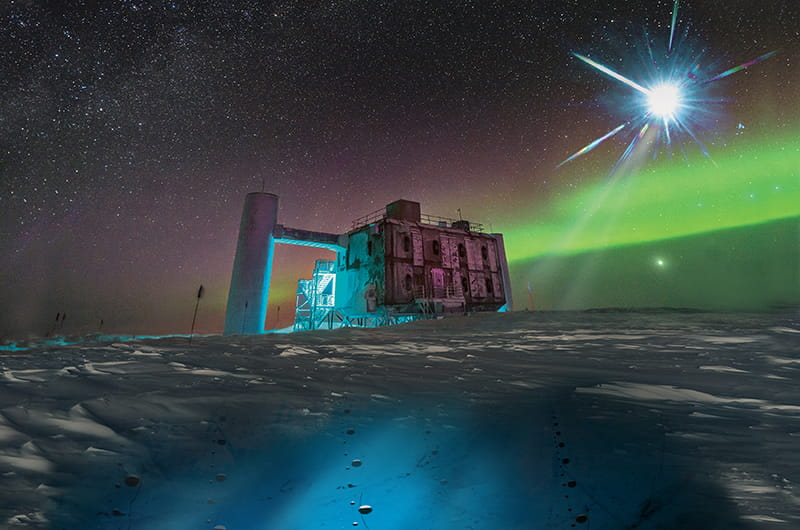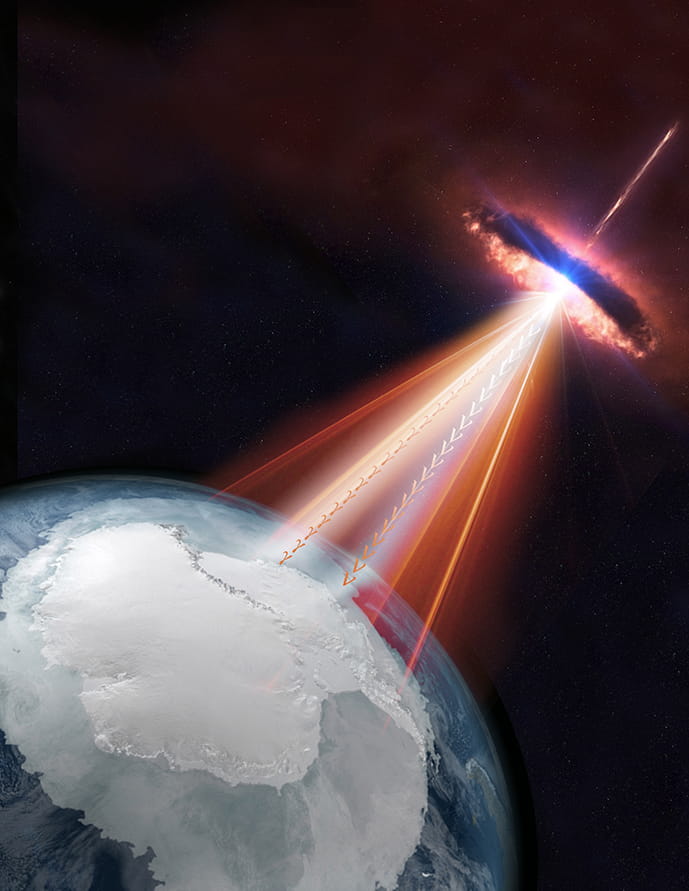Drexel Astrophysicist Proves the Origin of Neutrinos
 By Frank Otto
By Frank Otto

- Drexel Selects New, World-Class Life Sciences Building at 3201 Cuthbert Street for Medical Research Operations
- Breakthrough on Gene Therapy for Hereditary Spastic Paraplegia
- Drexel Environmental Collaboratory Releases Cross-Sector Findings on Severe Weather Recovery Challenges
- Drexel Launches the Manuel Stamatakis Center for Alternative Investments at the LeBow College of Business

A new way to look at the universe — using high-energy particles called “neutrinos” — is opening up thanks to the work of a Drexel faculty member and her colleagues working with a South Pole observatory.
Through the IceCube particle detector, Naoko Kurahashi Neilson, PhD, an assistant professor in Drexel’s College of Arts and Sciences, and her team were able to show that neutrinos originate from blazars. Blazars are giant, oval-shaped galaxies theorized to have spinning supermassive black holes at their center that blast out radiation — including light.
“A lot of people thought blazars emitted neutrinos but no one ever saw it,” Neilson explained.
But, now, the IceCube team has seen it — and they can prove it happened.
The IceCube team released two papers in Science that cover what their observatory recorded to have happened on Sept. 22 last year. They detected a specific high-energy neutrino arriving on a vector that lined up with a specific blazar that was flaring gamma rays.
The second paper, which Neilson served as lead author on, took into account observations made at IceCube from the previous nine-and-a-half years. It showed that there is strong evidence of other neutrinos coming from that specific blazar, which is can be seen in the night sky just off the left shoulder of Orion.

For the first time, scientists now know where at least some neutrinos come from.
But why is that important?
“The thing with astronomy with neutrinos, we think we can understand a lot more about how the high-energy universe works,” Neilson said.
Neutrinos that are very high-energy can provide a glimpse into how these far-away galaxies are formed and even how they evolved.
“All of astronomy is light. You see a star because photons — which is light —hits your eyes,” Neilson said. “It’s all different frequencies of light.”
Neilson explained it in terms of a flashlight.
“If I shine a light on a table, you won’t see the light on both sides,” she said. “But with a neutrino flashlight, it will go through and you can see it on both sides.”
Right now, “everything we know about astronomy is photons,” according to Neilson. Getting better acquainted with neutrinos — where they come from, especially — opens up a whole new range of what’s possible to see and understand.
As such, the IceCube team are already trying to expand upon their latest discovery.
“We’re trying to look for more sources and trying to look for more correlations between neutrinos and photons,” Neilson said.
In This Article
Contact
Drexel News is produced by
University Marketing and Communications.